Category Archives: Deep Learning
Top Deep Learning Myths You should know
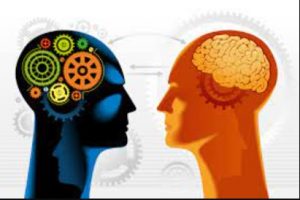
This post highlights the top deep learning myths you should know. This is important to understand in order to leverage deep learning to solve complex AI problems. Many times, beginner to intermediate level machine learning enthusiasts don’t consider deep learning based on the myths discussed in this post. Without further ado, let’s look at the topmost and most common deep learning myths: Good understanding of complex mathematical concepts: Well, that is just a myth. At times, they say that one needs to have a higher degree in Mathematics & statistics. That is not true. With tools and programming languages along with libraries available today, basic mathematical concepts should be able …
When to use Deep Learning vs Machine Learning Models?
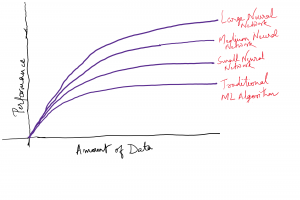
In this post, you will learn about when to go for training deep learning models from the perspective of model performance and volume of data. As a machine learning engineer or data scientist, it always bothers as to can we use deep learning models in place of traditional machine learning models trained using algorithms such as logistic regression, SVM, tree-based algorithms, etc. The objective of this post is to provide you with perspectives on when to go for traditional machine learning models vs deep learning models. The two key criteria based on which one can decide whether to go for deep learning vs traditional machine learning models are the following: …
Historical Dates & Timeline for Deep Learning
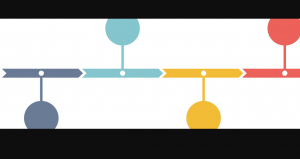
This post is a quick check on the timeline including historical dates in relation to the evolution of deep learning. Without further ado, let’s get to the important dates and what happened on those dates in relation to deep learning: Year Details/Paper Information Who’s who 1943 An artificial neuron was proposed as a computational model of the “nerve net” in the brain. Paper: “A logical calculus of the ideas immanent in nervous activity,” Bulletin of Mathematical Biophysics, volume 5, 1943 Warren McCulloch, Walter Pitts Late 1950s A neural network application by reducing noise in phone lines was developed Paper: Andrew Goldstein, “Bernard Widrow oral history,” IEEE Global History Network, 1997 Bernard …
Keras CNN Image Classification Example
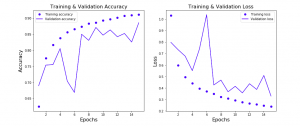
In this post, you will learn about how to train a Keras Convolution Neural Network (CNN) for image classification. Before going ahead and looking at the Python / Keras code examples and related concepts, you may want to check my post on Convolution Neural Network – Simply Explained in order to get a good understanding of CNN concepts. Keras CNN Image Classification Code Example First and foremost, we will need to get the image data for training the model. In this post, Keras CNN used for image classification uses the Kaggle Fashion MNIST dataset. Fashion-MNIST is a dataset of Zalando’s article images—consisting of a training set of 60,000 examples and a …
Convolutional Neural Network (CNN) – Simply Explained

In this post, you will learn about the basic concepts of convolutional neural network (CNN) explained with examples. As data scientists / machine learning / deep learning enthusiasts, you must get a good understanding of convolution neural network as there are many applications of CNN. Before getting into the details on CNN, let’s understand the meaning of Convolution in convolutional neural network. What’s Convolution? What’s intuition behind Convolution? Convolution represents a mathematical operation on two functions. As there can be applied different mathematical operations such as addition or multiplication on two different functions, in the similar manner, convolution operation can be applied on two different functions. Mathematically, the convolution of two different …
Keras Neural Network for Regression Problem
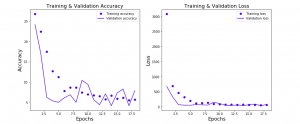
In this post, you will learn about how to train neural network for regression machine learning problems using Python Keras. Regression problems are those which are related to predicting numerical continuous value based on input parameters / features. You may want to check out some of the following posts in relation to how to use Keras to train neural network for classification problems: Keras – How to train neural network to solve multi-class classification Keras – How to use learning curve to select most optimal neural network configuration for training classification model In this post, the following topics are covered: Design Keras neural network architecture for regression Keras neural network …
Keras – Categorical Cross Entropy Loss Function
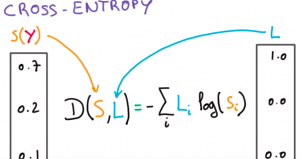
In this post, you will learn about when to use categorical cross entropy loss function when training neural network using Python Keras. Generally speaking, the loss function is used to compute the quantity that the the model should seek to minimize during training. For regression models, the commonly used loss function used is mean squared error function while for classification models predicting the probability, the loss function most commonly used is cross entropy. In this post, you will learn about different types of cross entropy loss function which is used to train the Keras neural network model. Cross entropy loss function is an optimization function which is used in case …
Python Keras – Learning Curve for Classification Model
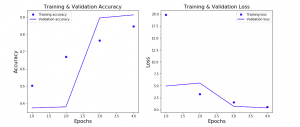
In this post, you will learn about how to train an optimal neural network using Learning Curves and Python Keras. As a data scientist, it is good to understand the concepts of learning curve vis-a-vis neural network classification model to select the most optimal configuration of neural network for training high-performance neural network. In this post, the following topics have been covered: Concepts related to training a classification model using a neural network Python Keras code for creating the most optimal neural network using a learning curve Training a Classification Neural Network Model using Keras Here are some of the key aspects of training a neural network classification model using Keras: …
Keras Multi-class Classification using IRIS Dataset
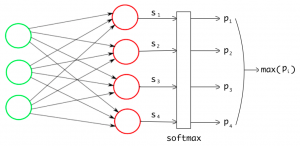
In this post, you will learn about how to train a neural network for multi-class classification using Python Keras libraries and Sklearn IRIS dataset. As a deep learning enthusiasts, it will be good to learn about how to use Keras for training a multi-class classification neural network. The following topics are covered in this post: Keras neural network concepts for training multi-class classification model Python Keras code for fitting neural network using IRIS dataset Keras Neural Network Concepts for training Multi-class Classification Model Training a neural network for multi-class classification using Keras will require the following seven steps to be taken: Loading Sklearn IRIS dataset Prepare the dataset for training and testing …
Top Tutorials – Neural Network Back Propagation Algorithm
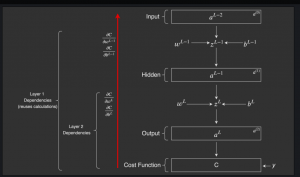
Here are the top web pages /videos for learning back propagation algorithm used to compute the gradients in neural network. I will update this page with more tutorials as I do further deep dive on back propagation algorithm. For beginners or expert level data scientists / machine learning enthusiasts, these tutorials will prove to be very helpful. Before going ahead and understanding back propagation algorithm from different pages, lets quickly understand the key components of neural network algorithm: Feed forward algorithm: Feed forward algorithm represents the aspect of how input signals travel through different neurons present in different layers in form of weighted sums and activations, and, result in output / …
Neural Networks and Mathematical Models Examples
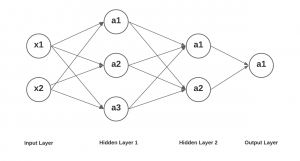
In this post, you will learn about concepts of neural networks with the help of mathematical models examples. In simple words, you will learn about how to represent the neural networks using mathematical equations. As a data scientist / machine learning researcher, it would be good to get a sense of how the neural networks can be converted into a bunch of mathematical equations for calculating different values. Having a good understanding of representing the activation function output of different computation units / nodes / neuron in different layers would help in understanding back propagation algorithm in a better and easier manner. This will be dealt in one of the …
Adaptive Linear Neuron (Adaline) Python Example

In this post, you will learn the concepts of Adaline (ADAptive LInear NEuron), a machine learning algorithm, along with Python example.As like Perceptron, it is important to understand the concepts of Adaline as it forms the foundation of learning neural networks. The concept of Perceptron and Adaline could found to be useful in understanding how gradient descent can be used to learn the weights which when combined with input signals is used to make predictions based on unit step function output. Here are the topics covered in this post in relation to Adaline algorithm and its Python implementation: What’s Adaline? Adaline Python implementation Model trained using Adaline implementation What’s Adaptive …
Yann LeCun Deep Learning Free Online Course

This post is about listing down free online course materials for deep learning (PyTorch) by none other than Yann LeCun. Here are some useful links to the deep learning course: Deep Learning course – Homepage Deep learning lecture slides Github pages having Jupyter notebooks having PyTorch code Lectures slides, notebooks and related YouTube videos can be found on the deep learning (DL) course home page. It is a 14 week course and covers different topics such as following: Introduction to deep learning (What DL can do, what are good features / representations) Gradient descent and back propagation algorithm Artificial neural networks Convolution neural networks (Convnets) and related applications Regularization / Optimization …
Deep Learning Explained Simply in Layman Terms
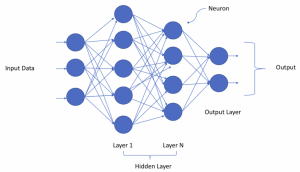
In this post, you will get to learn deep learning through simple explanation (layman terms) and examples. Deep learning is part or subset of machine learning and not something which is different than machine learning. Many of us when starting to learn machine learning try and look for the answers to the question “what is the difference between machine learning & deep learning?”. Well, both machine learning and deep learning is about learning from past experience (data) and make predictions on future data. Deep learning can be termed as an approach to machine learning where learning from past data happens based on artificial neural network (a mathematical model mimicking human brain). …
Keras Hello World Example
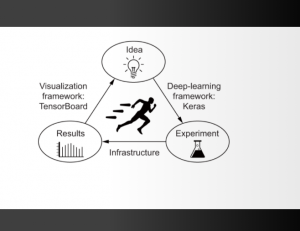
In this post, you will learn about how to set up Keras and get started with Keras, one of the most popular deep learning frameworks in current times which is built on top of TensorFlow 2.0 and can scale to large clusters of GPUs. You will also learn about getting started with hello world program with Keras code example. Here are some of the topics which will be covered in this post: Set up Keras with Anaconda Keras Hello World Program Set up Keras with Anaconda In this section, you will learn about how to set up Keras with Anaconda. Here are the steps: Go to Environments page in Anaconda App. …
PyTorch – How to Load & Predict using Resnet Model

In this post, you will learn about how to load and predict using pre-trained Resnet model using PyTorch library. Here is arxiv paper on Resnet. Before getting into the aspect of loading and predicting using Resnet (Residual neural network) using PyTorch, you would want to learn about how to load different pretrained models such as AlexNet, ResNet, DenseNet, GoogLenet, VGG etc. The PyTorch Torchvision projects allows you to load the models. Note that the torchvision package consists of popular datasets, model architectures, and common image transformations for computer vision. Here is the command: The output of above will list down all the pre-trained models available for loading and prediction. You may …
I found it very helpful. However the differences are not too understandable for me